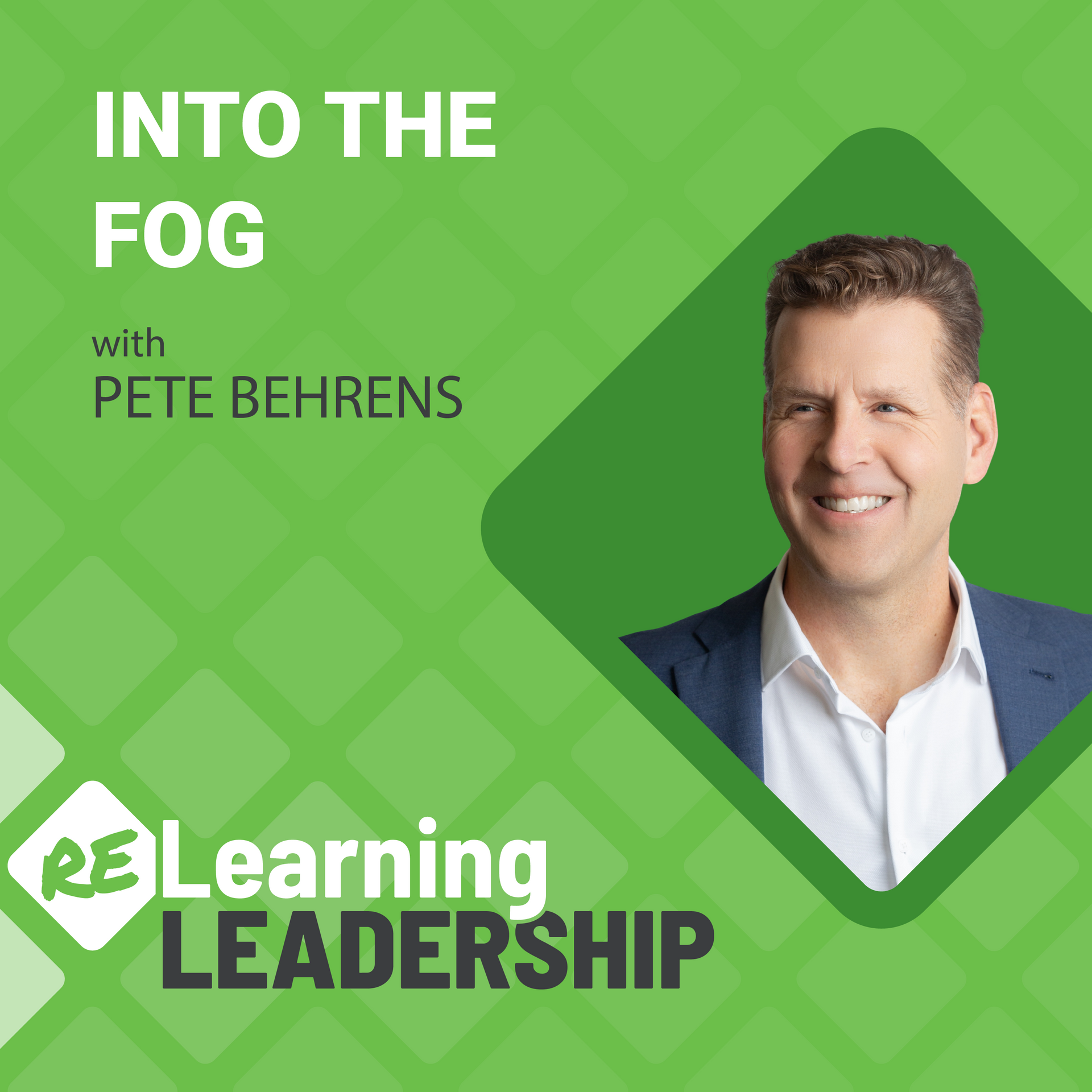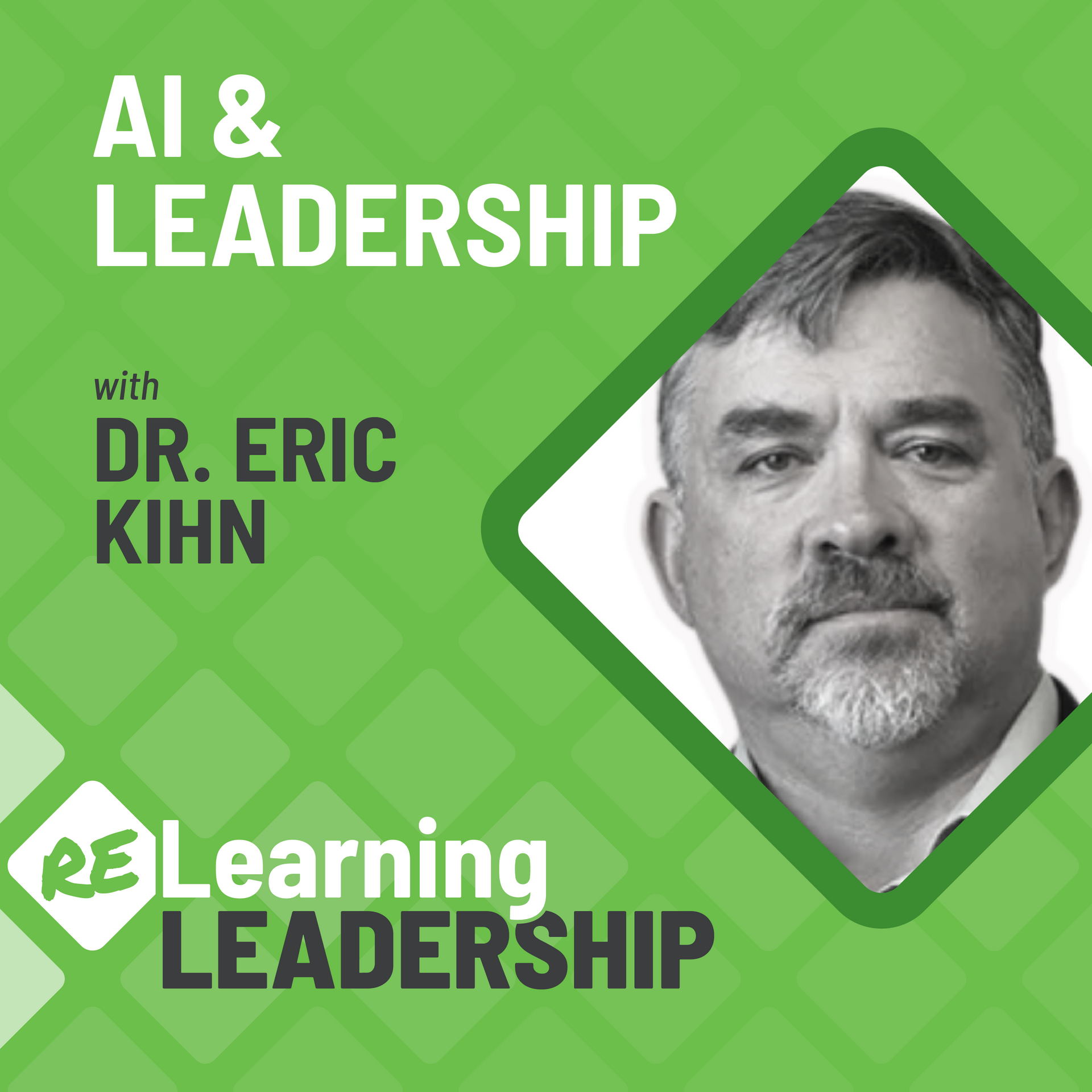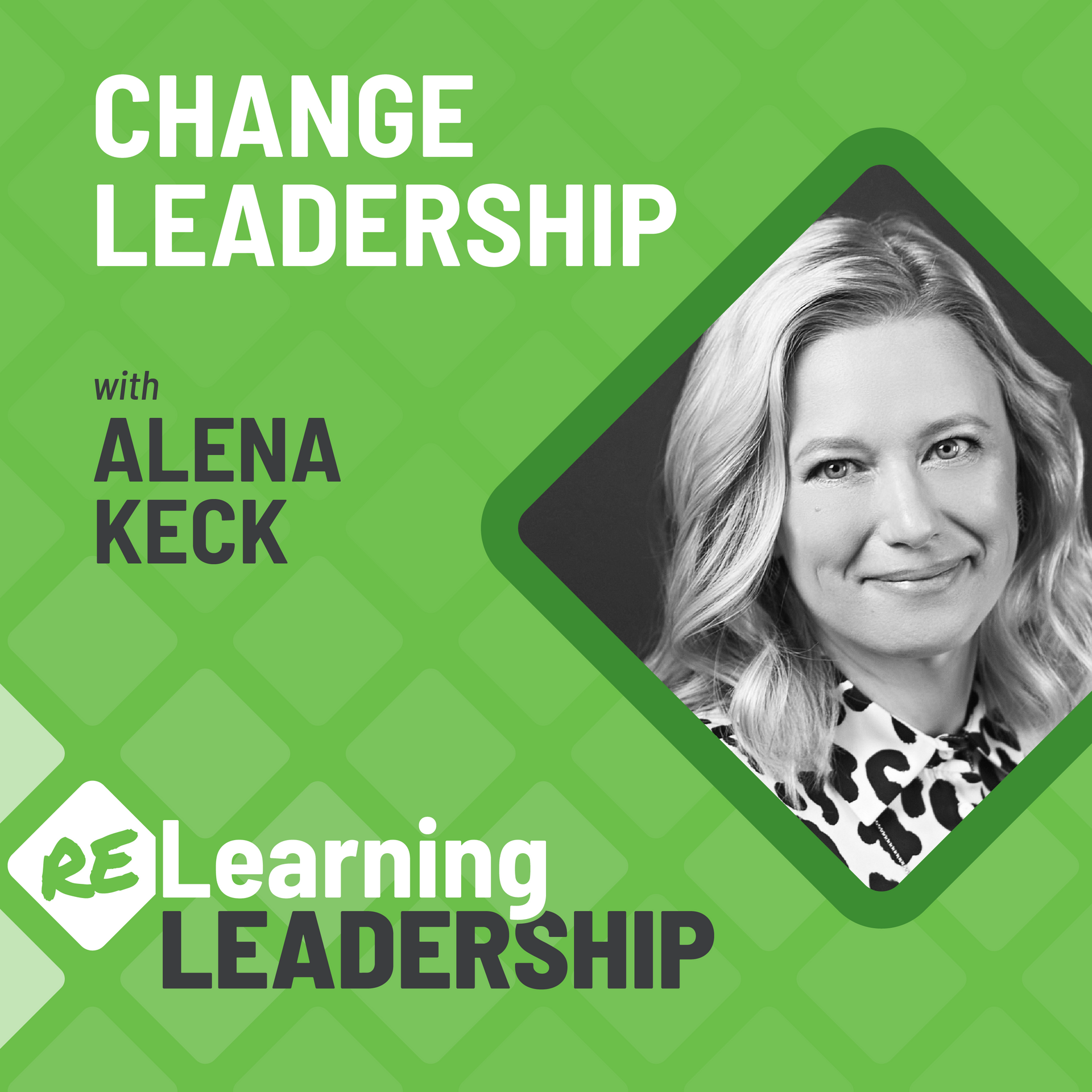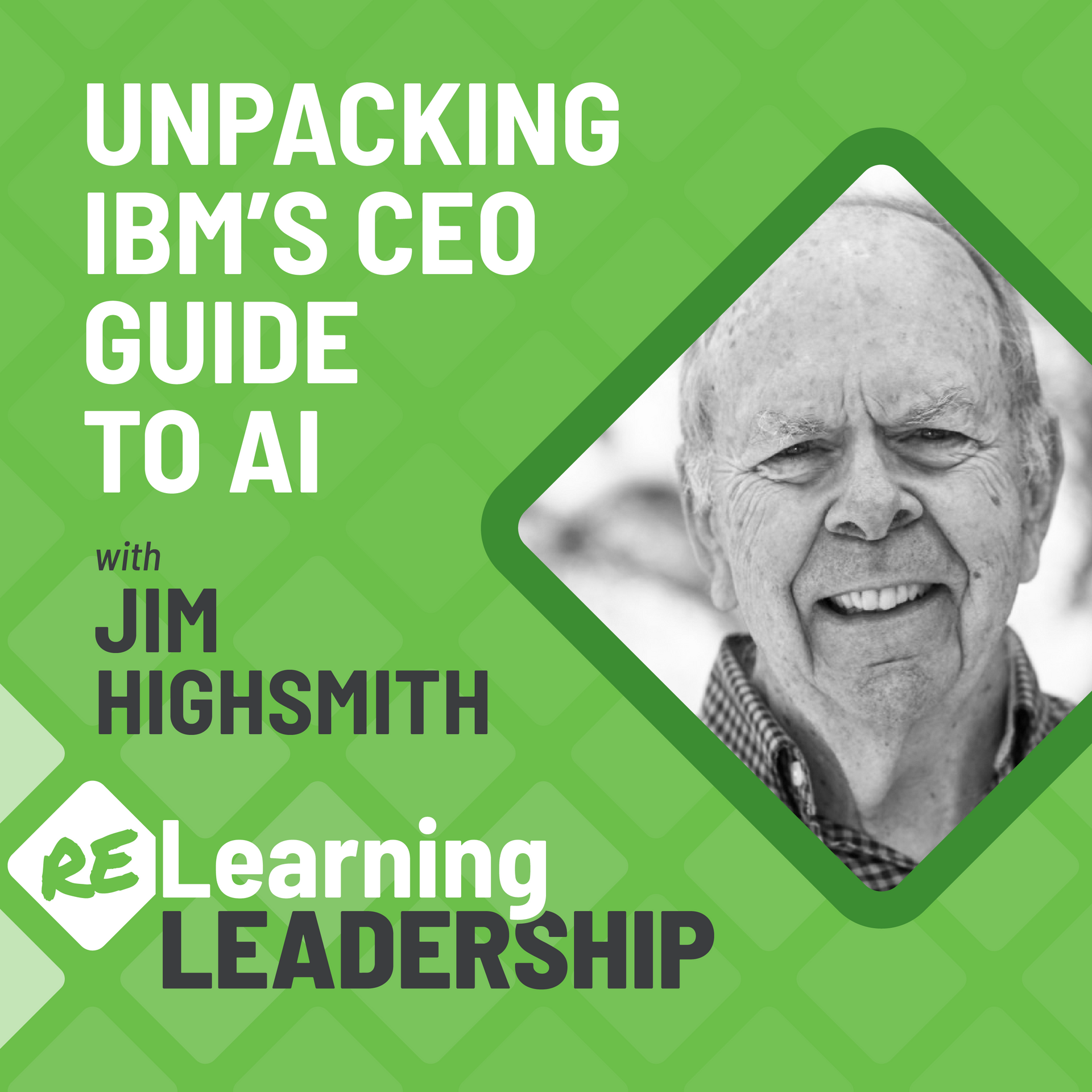14: I Wasn't Born a Leader
Two-thirds of leaders receive little to no education, coaching or mentoring. We can do something about this.
Pete Behrens welcomes us to season 2 with a personal story of his own accidental leadership journey as a student, employee and founder. Through his story, he hopes to connect, inspire, and challenge us all to become better leaders, more adaptive leaders, more diverse leaders, and more humane leaders.
Pete Behrens, Founder of the Agile Leadership Journey
Pete Behrens is a Leadership Coach and Founder of the , a community devoted to improving leaders and their organizations. As an engineer by profession, Pete now guides leaders to be more focused, responsive and resilient to change.
As a systemic coach and leader himself, Pete led the development of the Certified Enterprise Coaching (CEC) and Certified Agile Leadership (CAL) programs for the Scrum Alliance. Furthermore, he served on their Board of Directors from 2016-2018.
Pete Behrens is based in Boulder, Colorado, US where you might find him enjoying the mountains biking, hiking or golfing.
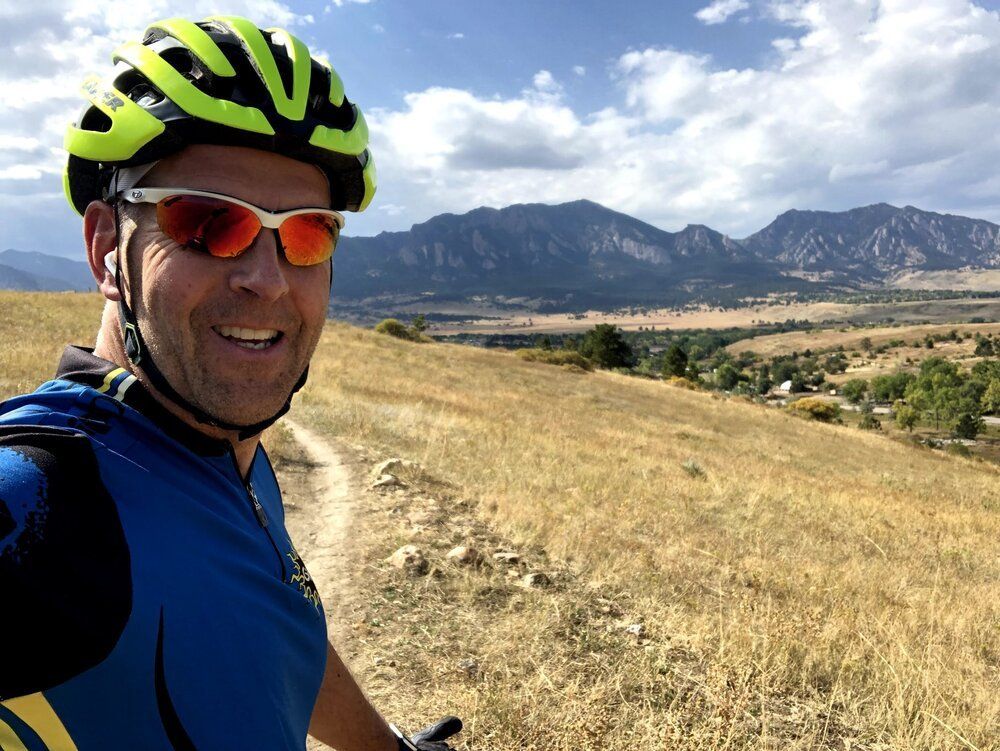
Relearning from Pete's Story…
None of us were born leaders. Some of us emerge as leaders. Why?
How can we move beyond accidental leadership to shape more adaptive, effective, and humane organizations?
The Problem of Accidental Leadership
There is a significant gap between how leaders see themself and how their employees see them. Further, almost 70% of employees list their manager as the most significant source of stress in their work life. Improving self-awareness AND leadership behavior is critical to moving past bad leadership.
Bad leadership is influenced more by unaware and uneducated leaders than simply “bad actors”. This is “accidental” leadership. Only about one-third of leaders are educated, mentored or coached. That leaves two-thirds fumbling their way through the dark on leadership. We can do something about this. You can do something about this.
Introducing Season 2
Season One of our podcast was a base-building exercise. It helped us find our voice and begin to tell our stories to help all leaders, at all levels, in all types of organizations, to learn and grow. It helped us understand ourselves better and to understand our purpose as a platform for change. I encourage you to explore those episodes if you haven’t had the chance.
We follow the mantra, organizational transformation requires leadership transformation. So, if we want better organizations, we need better leaders. If we want more adaptive organizations, we need more adaptive leadership. If we want more humane organizations, we need more humane leaders. It is time to step up to become a better leader. A more adaptive leader. A more humane leader.
In Season Two, we hope to up our game in bringing you stories on how to become a more humane leader. A leader that not only sees past color, culture, and gender, but advocates for the diversity it brings to improve your organization’s creativity, innovation, performance, and health. We will explore stories closer to the hearts and minds of leaders and the impact on those we lead.
Survey Data
2005
What We Know About Leadership in Review of General Psychology by Robert Hogan and Robert B. Kaiser
2016
New Managers Not Getting the Training They Need to Succeed in LeaderChat by Ken Blanchard Companies
2019-2021
10 Diversity & Inclusion Statistics That Will Change How You Do Business in Bonusly by Sara Porterfield
2021
4 million people quit their jobs in April, sparked by confidence they can find better work in CNBC by Jennifer Liu
2021
The Great Resignation: Why Employees Don't Want To Go Back To The Office in Forbes by Holly Corbett
We Celebrate Joy Zimmerman’s Milestone
Joy Zimmerman, the creator of the music you hear on this podcast, is celebrating an award-winning album this summer. The
Canvas Before Us reached Top #8 on the International Folk Chart! Visit Joy Zimmerman Music.
In this episode, and all of the episodes this season, we will share one of Joy’s songs at the end of the credits for you to listen and enjoy. We encourage you to add her to your playlist or invite her to sing at your event!

Episode Transcript
Pete Behrens:
Which of us was born to be a leader?
Welcome to another episode of Relearning Leadership, where we explore a specific leadership challenge and break it down to help improve your leadership, your organization… and even your personal life.
None of us were born leaders. Yet many of us emerge as leaders. Why? Who gets to become the leader? And why do we have so many bad leaders?
Today, I share my personal journey as a student, as an employee, and as a leader. And through my story, I hope to connect and inspire you to become a better leader. Not because I’m a great leader. But because you have chosen to join me on this journey to emerge as a better leader yourself.
Leadership is a choice. And we often make the wrong choices in selecting, developing, and rewarding our leaders.
Let’s dive in!
A small program note on this episode and all of the episodes in Season 2: following the episode, just past the credits, hang on, and we have a pleasant surprise waiting for you.
OK. Let’s get back to our show.
I wasn’t born a leader. I recall back in my youth—elementary, middle and high school—I never took any initiative to lead. I wasn’t even that effective of a follower, if I were to be honest. And I certainly wasn’t “cool”. Like many at that age, we are exploring who we are, what our interests are, who we’re connected to, and so forth. So we find ourselves in many situations that are quite uncomfortable. We hang out with “friends” because they're cool. We join sports teams and interest clubs to find out if we enjoy them or are any good at them. And we participate in religious or community youth groups because of our parents’ belief system.
Yet somewhere, leadership emerged within me. In college, I took my interest in cycling, and with the help of a friend, founded a new cycling club that didn’t exist at my school. We formed a formal college club, recruited members, and grew a fun escape from the rigors of study. I also began to be attracted to other leaders, to help them succeed in our physics club, in social events, and some activist groups. I found the act of leading and the attraction to those who were leading.
In my first post-college job, I was placed in a 4-month technical business training program. 20 of my peers were placed into an advanced education curriculum, where we were expected to put in over 16 hours a day, every day of the week! I don’t think that was a written rule, but we all felt the pressure to put in the time. It was a business boot camp for college graduates—and we relished in the shared adrenaline. Now, in the second half of that program, at the onset of our class project, we voted on two leaders to lead the project. I was one of them. I honestly didn’t know why at the time, and I don’t even really know still today. However, there was likely something from within me that others identified as leadership.
Two years later, upon being placed on a large client project with the same company, with over one hundred consultants, I found myself on a struggling account. Our leaders had promised a complete redesign of their technology, and I was one of dozens of engineers delivering, or at least attempting to deliver, on that goal. Yes, this was one of those mainframe modernization projects. However, after two years, we had binders and binders of requirements and designs, and yet had nothing of value delivered. And there was no horizon I could see where that was going to change that. It was frustrating to all of us.
However, somehow I found myself with two colleagues, pitching and getting approval for a radical new approach on a rapid application development (RAD) technique. (Think of RAD as a 1990s pre-Agile approach). Four of us received training and spent one month in my colleague’s basement before emerging with our first prototype. We demonstrated value to our client, and they allowed us to keep iterating. We continued down this path as I found myself leading an initiative that would eventually attract over one hundred people delivering value to our client. And while we never reached the original goal of complete modernizations our leader’s promised, our client was simply pleased by the value they were receiving.
Fast forward ten years and many leadership positions later, as technology lead, engineering manager, director, and vice president of engineering. Over that time, I never once was taught how to lead. I just led based on my talents, intuitions, and experience. Sure, we had a few seminars on communication, feedback, and performance reviews. And I also received direction and feedback from my managers, apprentice-style. But what were their leadership qualifications other than their own talents, intuitions, and experience?
I was never once taught what leadership is. How are we supposed to show up as a leader? What is our leadership style, and how do others relate to it? How is my power as a person and a leader impacting others I am leading? And so on.
Now, my experience is not an anomaly. A recent survey conducted by The Ken Blanchard Companies of more than 400 managers showed that only 39% of new managers received any leadership training. Just 34% had received mentoring. And only 31%, coaching.
This is a problem. A 2005 study by Hogan & Kaiser showed that 70% of employees identified the relationship with their manager as the most stressful part of their job. And a 2016 Penna Study on leadership found that while 80% of leaders believed they were supportive of their employees, only 25% of the employees agreed with them. This is a huge disconnect.
So, can we put the blame on bad managers? Or should we lay the blame on their managers for continuing a game of “Tag, you’re it! Your turn to lead”?
The leadership model in most organizations is broken. They take the top achievers and throw money and status at them to lead others doing their same work. At best, these leaders fail and learn from their mistakes to become better leaders. At worst, they micromanage, they overpower, and they disengage their workforce until they go find other work. Leadership development is missing. The state of leadership development for two-thirds of our leaders is still built on an apprenticeship model and the school of hard knocks.
We often characterize bad leadership as manipulative, vindictive, overpowering, or over-political. And sure, there are a few truly, purposefully bad leaders out there. However, I believe the vast majority of bad leaders are simply unaware leaders, uneducated leaders, and leaders who simply had managers transferring their bad habits to the next generation of leaders. We can do something about this. You can do something about this—and likely you are, as you’re listening to this podcast.
Today, I find myself leading two companies. Trail Ridge is a consulting practice providing services to our clients, and Agile Leadership Journey is a global community of educators and coaches licensing a shared curriculum to build better leaders.
Yet, I am more a leader by intuition and accident than intention and education. I carved my own personal MBA program through books, seminars, conferences, and user groups. “Hang out with smart people, and hopefully some of that rubs off on me.” And I have been fortunate to study under and collaborate with some brilliant minds like Peter Block, Bill Joiner, David Rock, and more. And I’ve had to create and navigate my own leadership development path. Imagine taking a hike in the woods without a path to follow—it’s hard and full of wrong turns and pitfalls.
I was trained in physics, mathematics, and engineering. I learned how to direct work, manage projects, define strategy, build budgets, scope requirements, coordinate functions, and more. I was rewarded for meeting project milestones, achieving quarterly and yearly goals, and delivering value to our customers. I never regarded myself as a people person; I liked engineering because it allowed me to do things that didn’t involve people. Yet, I’m finding myself in leadership positions that demand my ability to work through people.
And I find the leaders that I coach share a similar gap. They have tremendous amounts of education and experience in their discipline and domain, but very little in the art and craft of people. Yet, what is leadership without followership? What is being a leader without engaging other humans to accomplish things we could never do alone? Becoming a better leader means becoming a more human leader, humane leader. We can do something about this.
Now COVID-19, while catastrophic from a human loss perspective, and an unbalanced burden on working mothers, has done more for the common employee than any other event in my 30-year career. We are witnessing a great resignation of the workforce. We’re seeing employees choose not to work over working for leaders and organizations who choose not to value them as human beings. And this is true across all industries. The US Labor Department shared that 4 million people left their jobs in a single month in the spring of 2021. A recent survey of over 3,000 members on Blind, an anonymous network for professionals, found that 35% would rather leave their job than be forced back to the office. And 11% had already negotiated a work-at-home forever arrangement.
However, this perspective comes mostly from a privileged digitally equipped workforce. So many businesses have had to shut doors and let go of valued workers. And a vast majority of the workforce have had little choice in the impact COVID-19 has had on their work experience. At Trail Ridge, we were forced to make a significant strategic pivot in 2020, releasing five of our managing partners to become independent, so we could focus more intently on developing our Agile Leadership Journey. This has been hard on all of us.
COVID-19 further created a breath for earth’s climate. Drastically reduced travel has lowered the carbon footprint more than any effort or event in human history. It’s enabled a significant technology-enabled workforce to flex their working hours and location. And while it’s creating havoc for those with young children struggling with home-schooling, it’s brought families closer together and outdoor activities more valued for an improved work-life balance. Personally, pre-COVID I spent 5-months a year in Europe and slept about half of my nights in a hotel bed. In the 18 months since COVID, I’ve made one business trip, and yet continued to educate, engage, and coach leaders, and organizations to improve their health and performance, and continued to build our platform for educators and coaches to do the same.
In parallel with COVID, we’ve been witness to a growing social movement to respect all human life, from Black Lives Matter to LGBTQ Communities to immigrants escaping unimagined human suffering. A significant portion of the world is awakening to the need to shift simply from being color/culture/gender-blind to advocating for their promotion and equal status in society and business. According to a survey by Glassdoor, a diverse and inclusive workplace was of paramount importance to minority job seekers: 72% of women, 89% of Black, 80% of Asians, and 70% of Latinos ranked workforce diversity as important in their job search. Furthermore, only 40% of women feel satisfied with the decision-making process in their organizations (vs. 70% for men). And finally, a Harvard Business study showed that 78% of employees said their leadership lacks diversity. Now, whether you remember all those numbers or not, the survey says we have a diversity problem in business.
We are currently witnessing a tidal wave of change in the way we work and the expectations we are bringing to work. This tidal wave is crashing against a levee of unaware, uneducated, and inhuman leadership. Now, I don’t claim to be the best leader, or even a great leader. However, I can claim that I am on a journey to become a better leader and help others towards that same goal. We can do something about this.
Season One of our podcast was a base-building exercise. It helped us find our voice and begin to tell our stories to help all leaders, at all levels, in all types of organizations, to learn and grow. It helped us understand ourselves better and to understand our purpose as a platform for change. I encourage you to explore those episodes if you haven’t had the chance.
We follow the mantra, organizational transformation requires leadership transformation. So, if we want better organizations, we need better leaders. If we want more adaptive organizations, we need more adaptive leadership. If we want more humane organizations, we need more humane leaders. It is time to step up to become a better leader. A more adaptive leader. A more humane leader.
In Season Two, we hope to up our game in bringing you stories on how to become a more humane leader. A leader that not only sees past color, culture, and gender, but advocates for the diversity it brings to improve your organization’s creativity, innovation, performance, and health.
We will explore stories closer to the hearts and minds of leaders and the impact on those we lead. And while a global transformation of this nature may appear idealistic and out-of-touch, I’m reminded of the story from Loren Eisley about a girl on a beach. I noticed her picking up and throwing things back into the ocean. So I asked her, “What are you doing?” She replied, “I’m throwing starfish back into the ocean. The surf’s up, and the tide’s going out. If they don’t get back, they’ll die.” I wondered out loud, “Doesn’t it feel hopeless? How can you make a difference to the thousands of starfish on this beach and the millions more on beaches all over the world?” She simply bent down, picked up another starfish, threw it back into the ocean, and said, “I made a difference to that one.”
I wasn’t born a leader. I wasn’t formally trained in leadership. Yet, I’m on a journey of self-awareness and development to become a better leader, a more adaptive leader, a more humane leader. And I invite you to join me. I don’t claim I’m better at leadership. I can only claim I’m committed to having curiosity to explore, a resolve to practice, courage to let go, patience to listen, and time to reflect.
Together, we can make a difference. We can shape ourselves. We can shape our interactions. We can shape our organizations to be more aware, more diverse, more inspiring, more adaptive, and more humane.
Thank you.
Relearning Leadership is the official podcast of the Agile Leadership Journey. It’s hosted by me, Pete Behrens, with analysis from our global Guide community. It’s produced by Ryan Dugan. With music by Joy Zimmerman. If you loved listening to this podcast, please leave us a review. And visit our website, relearningleadership.show, for guest profiles, episode references, transcripts and comments, and more. And to relearn more about your own leadership, visit us at agileleadershipjourney.com.
Hey wait! Before you go, I want to celebrate a milestone by one of our team members. Joy Zimmerman, who composed and recorded the intro and closing music you enjoy on our show, released a new album in August called The Canvas Before Us. The album was ranked #8 this summer on the International Folk Chart! And Joy was ranked #9 on Top Artists for the month! Congratulations! That’s unbelievable, considering she’s up against the likes of Jackson Browne and Nanci Griffith.
In each episode this season, we will close with a sampling of one of Joy’s songs from the album. I hope you enjoy them as much as we do. This first one sits close to home for me, as it challenges me to know where I stand when everything around me is in turmoil. Enjoy the song Where Will You Stand.
Explore:
Recent Episodes

